The Best Deals on Camping, Backpacking and Outdoor Gear [June 2025]
We talk a lot about sustainable outdoor gear here at Terradrift. Because it’s freakin’ important. The textile industry (which includes outdoor clothing and gear manufactures that makes everything from tents and sleeping bags to sweaters and boots) is an incredibly polluting and wasteful industry. And since most of the gear we use is made of synthetic materials that don’t biodegrade, and dirty production practices directly and negatively affect the places we recreate, it’s important to make better choices to protect ourselves and our environment.
But the term “sustainable” can feel like a pretty loaded word these days. I mean, literally everyone is slapping it on their products in an effort to get eco-conscious shoppers to buy their stuff. But a freakin’ ton of sustainability verbiage is total greenwashing (aka: B.S.).
That said, it’s 100% true that sustainability is a spectrum. And there’s really no such thing as 100% sustainable when it comes to anything. Clothing and gear can be MORE sustainable. They can even be SUPREMELY sustainable. But the truth is, everything that’s manufactured leaves a footprint of some kind. Sometimes a stupid huge one.
Now, I’m not saying we should all just lay down and let the earth re-claim our bodies or anything like that–that’s some Avengers Infinity War-level nonsense right there and that’s just stupid. What’s not stupid is learning HOW to identify clothing and gear that’s ACTUALLY more sustainable and how different sustainability can look from brand to brand or item to item.
So buckle up, because we’re diving into practices and verbiage that’s slapped all over products and web pages these days so that the next time you see the Bluesign logo on a jacket, or are considering buying from a new brand, you know what the heck all the mumbo-jumbo means.

Understanding Ethical and Sustainable Outdoor Gear: Sustainable Terms Defined
Recycled
Generally, we’re thrilled to see more and more products hit racks that are made with recycled content, because it means more waste (mostly plastic water bottles) is being diverted from landfills to be broken down and repurposed into something else. Like a jacket or tech shirt or duffle bag. And stuff made from recycled materials generally has a much smaller carbon footprint than gear made with virgin materials.
But just because something says “recycled materials” doesn’t mean it’s ALL made of recycled materials. So check the tag–or in the case of Rab gear, the Material Facts label on the product page online–to see what percentage of the materials are recycled. The higher the number, the better.
Also keep in mind that there’s pre-consumer recycled waste–also known as post-industrial–as well as post-consumer. “Pre” generally means scraps and such from factory floors are collected and repurposed, which is good, but not quite as good as “post”, which utilizes and reduces the amount of plastic waste already in the waste stream. Some brands, like Opolis Optics, which make rad sunnies and ski goggles, even collects plastic from oceans and landfills, which effectively clean natural spaces while making products out of more responsible materials.
So if you see the term “recycled,” check not only the content, but where the plastic used came from. If the brand doesn’t specify at least one, it may be greenwashing.
One downside of clothing made out of recycled materials: it’s often hard to recycle again as quality and durability break down a bit during each processing.

Bluesign
Next up is the term “Bluesign.” Which is often followed by the words “materials,” “certified,” or “approved.” BLUESIGN® is a designation that has to do with manufacturing and materials. It’s an independent verification system that “guarantees the highest degree of assurance to consumers and ensures that the products were manufactured with responsible use of resources and the lowest possible impact on people and the environment.”
It’s a more holistic verification system used by industries and brands to test and certify that their fabrics, processes, and more adhere to a higher, cleaner, more responsible standard. A whole product could be BLUESIGN certified, or just some of the materials used to make it could be BLUESIGN approved.
So this logo on a product tag does mean it’s a more responsibly made product by at least some degree, though it doesn’t necessarily mean the product is free from all harmful materials.
Organic
You’re probably already familiar with this term, but just in case, “organic” designates materials farmed without the use of pesticides or herbicides, which are often toxic, long-lasting chemicals that pollute the environment and even negatively impact human health.
They can devastate natural water sources like rivers, lakes and oceans, not to mention coral reefs. Additionally, growing organic cotton requires immensely less water (like 91% less) AND energy (62% less) to grow than conventional cotton. So yeah, purchasing organic cotton is way more eco-friendly. Bonus if it’s Global Organic Textile Standard (or GOTS) certified.
Which takes “organic” one step further. That’s because certification stipulates strict requirements throughout a product’s supply chain for both ecological and labor conditions in textile and apparel manufacturing using organically produced raw materials (like cotton and hemp). So if “organic” is good, “GOTS” is better.
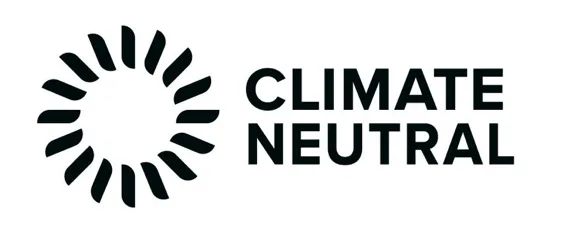
Carbon Neutral
When a brand or company is carbon neutral, it means they‘ve offset 100% of the carbon emissions they produce. That’s great, because carbon creates greenhouse gasses, which contribute to harmful climate change, and just about all manufacturing processes contribute considerable amounts of carbon.
Offsetting that carbon footprint to become carbon neutral (or even carbon negative if a company offsets more than 100%), can involve any number of things, from funding wind or solar farms to planting trees to providing clean water or cooking equipment to third world countries to building hydroelectric power plants. But not all carbon offsets are created equal. And not all purchasing programs fund projects that truly, effectively sequester carbon. It’s another segment of the industry where there’s a lot of greenwashing.
Also, it’s stupid easy to get online and purchase carbon offsets. What’s harder is actually reducing your footprint so there’s less to offset. So if a brand claims to be carbon neutral, check to see if A.) they’re funding reputable offset programs that are doing measurable good, and B.) the brand is also working toward reducing their carbon output. A brand with a Climate Neutral Certified logo does tend to mean the brand is reducing in addition to offsetting.
Biodegradable
This is another tricky one. At its core, “biodegradable” means that given enough time and the right conditions, the product will eventually break down into natural, non-polluting materials, which means less junk piling up in landfills and contributing greenhouse gasses to the atmosphere. And that’s awesome. If only everything were biodegradable!
But the process sometimes takes decades, even hundreds of years depending on the materials in question. And some, especially if they’re coated with harmful chemicals, could leech those chemicals into the soil and waterways. So if something is labeled as biodegradable, do some digging to find out how it breaks down, if it needs a particular type of environment, and how long it takes.
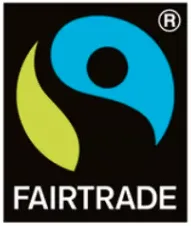
Fairtrade Certified
The term means third-party certified products were made in a way that puts people and planet first (important, as the two are intrinsically intertwined). It means that those supplying materials (like farmers, workers, etc., usually in third world countries) receive a fair wage, but also better working conditions, economic stability, and that items are produced in a way that promotes local sustainability.
It means the most vulnerable suppliers and workers in developing countries aren’t being taken advantage of (like they would be in fast-fashion sweatshops, which are basically the opposite of fair trade). So if a product is certified, you can be fairly sure it was made according to rigorous social, environmental, and economic standards.
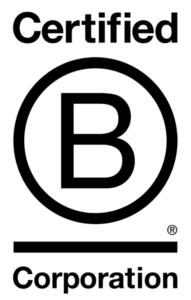
B Corp Certification
This certification designates that a business has gone through a rigorous audit process and is meeting high standards of performance, accountability, and transparency on factors ranging from employee benefits and charitable giving to supply chain practices and the materials they use. It’s a good sign that the certified brand is putting their money where their mouths are when it comes to responsible manufacturing and business operation.
Circular
Another loaded and complicated term, in essence, “circular” means a product is made of recycled materials and can also be recycled at the end of its useable life. It means resources and materials, instead of being tossed in a landfill when you’re done with them, are instead put back into the recycling stream to be broken down and used again.
It means literally nothing–or almost nothing–is going to waste–it’s being repurposed instead. That keeps virgin materials from having to be constantly manufactured and old materials out of landfills because they are instead being recycled into something usable. It’s kinda the gold standard for sustainability.
But circularity is tricky. First of all, clothing and gear is made of lots of different materials. Even if it’s all polyester, it’s probably different types of polyester. Then there’s the zipper, which is almost definitely metal, all of which have to be separated before they can be melted down and repurposed into new materials.
There have been some awesome advances in these processes in the last couple of years, and more brands, like Houdini, Picture Organic Clothing, and On Running, are designing their gear out of single materials and collecting retired clothing and gear for recycling, but it’s a tricky process.
Still, buying gear that’s circular, as long as the brand backs up their process with info and facts and offers a way for customers to send in gear at the end of its life, is a sustainable choice, especially if you’re looking ahead to the future when garment recycling will hopefully be at a point where it can be done at scale.
PFC-Free or PFAS-Free
PFC’s or PFAS are usually found in DWR (Durable Water Repellent) treatments. Think rain jackets, backpacks, water resistant pants, you name it. They are often referred to as “forever chemicals” because the fluorocarbons take ages to break down, remaining in the environment for years, seeping into the food chain and drinking water. One study showed nearly all Americans have detectable amounts of it in our blood, which can potentially cause health issues.
Fortunately, more and more brands are ditching the chemicals completely, though it’s a difficult problem to solve. So when shopping for just about any kind of gear, from shoes to gloves to hats, look for brands and gear that advertise that they use PFC-free or PFAS-free DWR treatments.

RDS Certified Down
Here’s one that I’m gonna touch on because I know some of you out there wanna know even though we don’t use down products here at Terradrift because we’re vegan. It stands for Responsible Down Standard. You’ll sometimes see it on products like jackets or sleeping bags that contain down as a sign that it’s more “sustainable.”
But honestly, most of what it means is just that ducks and geese are dead before their down or feathers are harvested. As in, the animals aren’t live-plucked. If you opt to buy down from time to time, I think it’s important to be aware of what the certification actually means. And to know that recycled down is way more sustainable than RDS-certified down, especially from an animal welfare perspective.
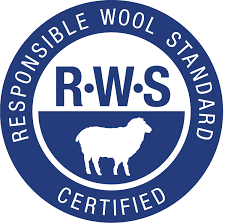
RWS Wool
Wool involves a similar dilemma for many. Yes, it’s a natural fiber, but sheep have been bred to produce too much wool and then are often abused and injured, or even mulesed, a horribly painful practice, during shearing. Not always, of course. But if you do choose to wear wool, you can look for items labeled as Responsible Wool Standard, or RWS, an organization that helps improve the welfare of sheep. Or better yet, products made with recycled wool.
Leather
Now, some might argue that leather is natural and biodegradable and super durable. And while that last descriptor is pretty true, leather is not only a product of the animal agriculture industry–one of the largest contributors to harmful greenhouse gasses on the planet–the tanning process is also highly toxic and extremely water intensive. Some brands are finding better, cleaner ways to prepare animal hide, but on the whole, it’s an incredibly dirty and toxic industry.
Undyed and Solution Dyed
We love undyed gear so much in part because synthetic dyes are often toxic and can remain in the environment, negatively impacting waterways and soil health for ages. But if white isn’t your thing, you can look for solution-dyed or naturally-dyed products that are less polluting and require less water.
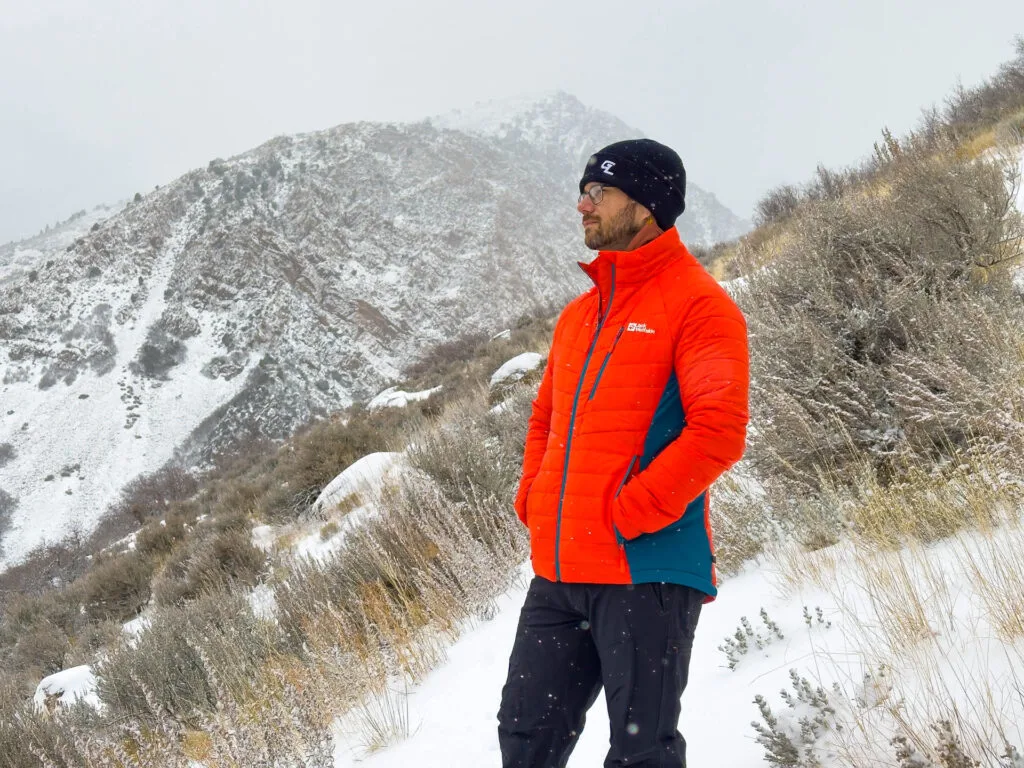
Sustainable Outdoor Gear: What it All Means and What to Do About It
Certifications aren’t the end-all, be-all when it comes to sustainability. After all, a lot of these certifications take a crazy amount of time and money to earn and a lot of small brands simply can’t pay. So, whether or not you see certifications, do a little extra research into the brands themselves, which can also help you uncover if any of the things they’re claiming about their gear being “sustainable” is actually just greenwashing.
Outdoor brands that are truly making a concerted effort will likely talk about it. So look for these things on their websites:
- Annual reports or sustainability studies from past years with measurable impacts or progress reports.
- Explanatory and science-backed explanations of how they’re innovating in order to create less waste or reduce their footprint or how they support the people who manufacture their products.
- Gear that’s made in the USA, which drastically reduces the footprint of transportation costs overseas
- If they use other brand’s leftovers and scrap fabric that would otherwise end up in a landfill (Cotopaxi’s Del Die line, for example).
- Smaller brands with fewer products lines, or lines that aren’t updated with new patterns or materials every single season or every year create less waste by default. That’s because every new style results in literal tons of material waste during the design process and many “outdated” colors or designs are thrown out if they can’t be sold.
- Evidence of volunteer projects or that brands financially support environmental, social, or ethical non-profits, a good sign they’re putting their time and money where their mouths are.
- If a brand offers repair services for clothing or gear, because that can also prolong the life of items like expensive shell jackets, tents, backpacks, even snowshoes. Rapha, for example, automatically sends matching patches with every piece of cycling clothing they sell to empower customers to repair instead of replace.
- How durable gear is and how long it will last. The longer a backpack stays in use, the less stuff goes to landfills and the fewer new items need to be produced.
And remember, the most sustainable clothing and gear is used gear. So don’t be afraid to shop at used gear stores or thrift stores or on used gear sites online like REI or GearTrade.
Then make your dang gear last by washing and repairing your gear below, ‘cause we wanna keep that stuff out of a landfill for as long as possible, you know what I’m sayin?

Bottom Line
Obviously there’s SO MUCH that goes into determining if an outdoor brand or specific piece of gear is sustainable. And there’s plenty more I didn’t even touch on. And yeah, it takes a bit of research sometimes to figure out what’s what (and what’s greenwashing), but if you care about protecting the places you recreate, I think it’s worth it.
So ask the hard questions. Think critically. Don’t over-consume, by which I mean buy stuff you don’t need just because it’s cool and new. And remember that sustainability is a spectrum. No brand or product is perfect, neither are we as consumers. What’s important is progress, that we’re constantly trying to be better, even if we’ll never reach perfection.
•
This post contains affiliate links, which means when you clicky-click and make a purchase, we may receive some compensation. Don’t worry, it won’t cost you any extra, but you will be supporting Terradrift! That’s what we call a win-win!
